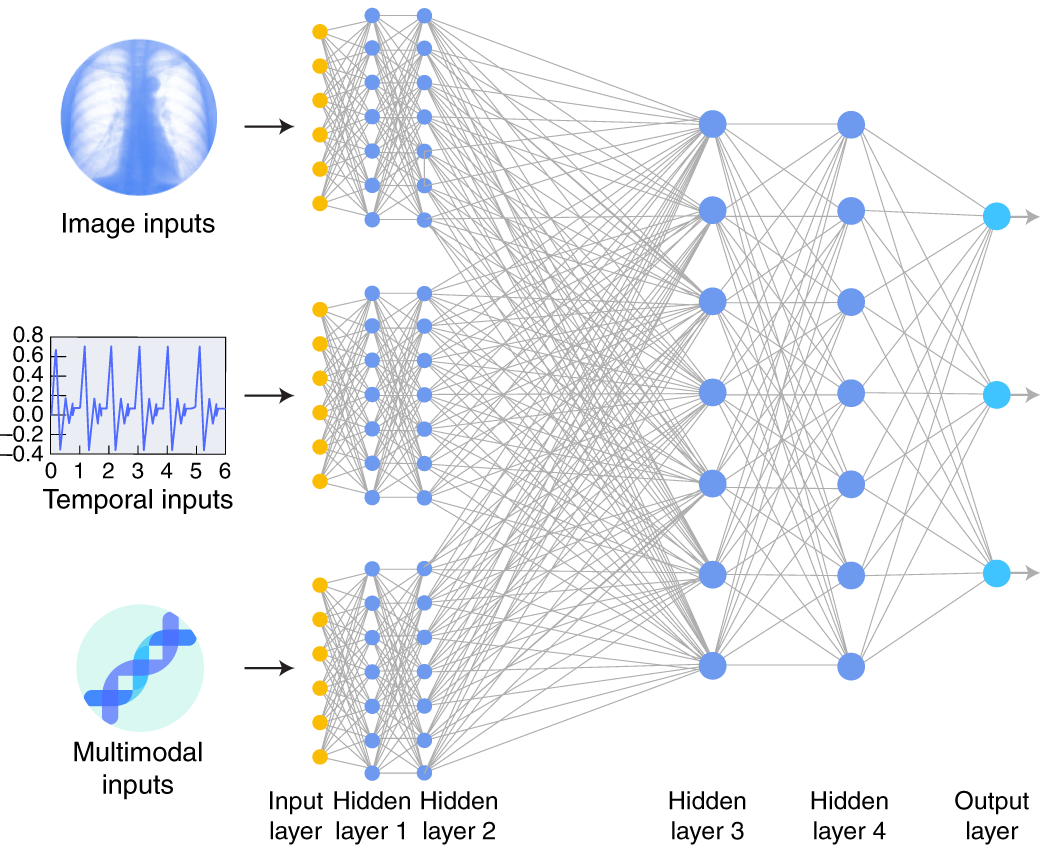
Ebrima Y. Jallow
5min read
Tackling The Gambia's Healthcare Challenges with Innovative Machine Learning Solutions

Traditional healthcare decision-making in The Gambia is facing a plethora of challenges, including scarce resources, a shortage of healthcare professionals, and a lack of specialized training. With only 1.5 doctors per 10,000 people in The Gambia, compared to 26.4 doctors per 10,000 people in the United States, the healthcare system is overburdened, resulting in inconsistent diagnoses and treatment plans. Additionally, the high rate of iatrogenic incidents in the United States is a cause for concern in The Gambia, where there are no efficient means of measuring iatrogenic. The lack of resources and training exacerbates the issue, and it is imperative to develop innovative and effective solutions to improve healthcare decision-making and ensure better patient outcomes. Additionally, healthcare providers are subject to cognitive biases and noise in decision-making processes, which can lead to inconsistent diagnoses and treatment plans.
Iatrogenics is the causation of a disease, a harmful complication, or other ill effect by any medical activity, including diagnosis, intervention, error, or negligence.
Biases are mental shortcuts that can lead to errors in judgment and decision-making. They can be caused by various factors, such as personal experiences, cultural and societal influences, and cognitive limitations. Confirmation bias, for example, is a common bias in which people tend to seek out information that confirms their existing beliefs while ignoring information that contradicts them. Availability bias is another common bias in which people make judgments based on the information that is most readily available to them, rather than considering all available information.
Noise, on the other hand, refers to the random variability in decision-making processes. It can be caused by a variety of factors, such as mood, fatigue, and distractions. In healthcare decision-making, noise can lead to inconsistent diagnoses and treatment plans, even when multiple healthcare professionals are presented with the same patient and symptoms.
These biases and noise can be particularly problematic in an undeveloped health system like The Gambia’s, where healthcare providers may have limited resources and specialized training. This can lead to over-reliance on personal experiences and cultural influences, which can introduce biases into decision-making processes. Additionally, noise can be exacerbated by the limited availability of healthcare professionals, who may be overworked and fatigued, leading to inconsistent diagnoses and treatment plans.
While traditional healthcare decision-making in The Gambia is subject to numerous limitations, there is hope for improving healthcare outcomes through the use of machine learning algorithms. In the next section, we will explore the potential of machine learning to reduce biases and noise in decision-making processes, leading to more consistent and accurate diagnoses and treatment plans.
Promise of Machine Learning

Machine learning algorithms offer a promising solution to the limitations of traditional healthcare decision-making in The Gambia. By leveraging large amounts of data, machine learning algorithms can identify patterns and relationships that may be difficult for humans to detect. This can lead to more accurate diagnoses, more personalized treatment plans, and ultimately, improved healthcare outcomes.
Machine learning is a branch of artificial intelligence that empowers systems to learn and make predictions or decisions without explicit programming.
One key advantage of machine learning algorithms is their ability to reduce biases in decision-making processes. Unlike humans, machine learning algorithms do not have personal experiences or cultural biases that can influence their judgments. They can analyze data objectively and consistently, leading to more reliable diagnoses and treatment plans.
In addition to reducing biases, machine learning algorithms can also reduce noise in decision-making processes. By analyzing large datasets, machine learning algorithms can identify patterns and relationships that may be obscured by random variability in individual decision-making processes.
The biggest edge of machine learning over traditional decision-making processes in healthcare is its ability to go multi-modal. This is when a machine learning model is able to take in image-based data like radiology images, discrete or continuous numeral values like the vitals signs of the patient, e.g. body temperature, text-based data e.g. doctors notes from previous appointments, medical history, and combined all these data points, find patterns in the data, and arrive at a decision within a few seconds.
Here are some ways Machine Learning could be applied in Healthcare
-
The National Nutrition Agency (NANA) can use machine learning algorithms to identify children at risk of malnutrition. The algorithm will analyze data on a child's weight, height, and age, as well as other factors such as breastfeeding status and household wealth, to identify those at the highest risk. This allows healthcare professionals to intervene early and prevent malnutrition before it becomes severe.
-
While most pregnancies and births are uneventful, all pregnancies are at risk. So the sooner these potentially life-threatening complications are detected, the better. Machine Learning algorithms could be used to predict Antenatal Risk Stratification - this is the process of identifying pregnant women who are at high risk of developing complications during pregnancy, such as preterm delivery, preeclampsia, gestational diabetes, etc. using predictor variables like maternal age, gestational age, BMI, blood pressure, hemoglobin levels, and urine protein levels.
While machine learning algorithms offer great promise for improving healthcare outcomes in The Gambia, there are also challenges and considerations that must be addressed. In the next section, we will explore some of these challenges and discuss ways to address them.
Challenges
-
One key challenge is the availability and quality of data. Machine learning algorithms rely on large amounts of data to identify patterns and relationships, but in some cases, such data may be limited or of poor quality. In The Gambia, there may be challenges with data collection and management, which can impact the effectiveness of machine learning algorithms.
-
Another challenge is the potential for bias in machine learning algorithms. While algorithms themselves do not have personal experiences or cultural biases, the data used to train them may reflect biases in the healthcare system or society at large. For example, if historical data used to train a machine learning algorithm reflects biases in the diagnosis and treatment of certain groups, the algorithm may perpetuate those biases in its future decision-making.
-
Finally, it's important to consider the role of healthcare professionals in using machine learning algorithms. Machine learning algorithms can augment the decision-making process, but they should not replace the human expertise and judgment of healthcare professionals. It's important to ensure that healthcare professionals receive training on how to use machine learning algorithms effectively and ethically and that they remain involved in the decision-making process.
To Recap.....
The traditional healthcare decision-making process in The Gambia faces several challenges due to limited resources, shortage of healthcare professionals, and cognitive biases and noise in decision-making processes. Machine learning algorithms offer a promising solution to reduce biases and noise in decision-making processes, leading to more consistent and accurate diagnoses and treatment plans. By leveraging large amounts of data, machine learning algorithms can help identify patterns and relationships that may be difficult for humans to detect, leading to improved healthcare outcomes. However, challenges such as the availability and quality of data, the potential for bias in machine learning algorithms, and the importance of involving healthcare professionals in the decision-making process must be addressed.
But....
Despite these challenges, the most prominent potential of using ML algorithms is in helping to close the doctor-patient gap in the country. So instead of only focusing on training more doctors in medical school and they end up leaving the country anyway for greener fields, we can focus on training Machine Learning models to augment doctors, increase both the speed and accuracy of medical diagnosis and eventually lead to better and more affordable health outcomes.
PS: In case you're skeptical of the potential of Machine Learning. Every research where a model is pitched against a doctor, the model always comes on top (accuracy, noiselessness, limited biases, etc.).


